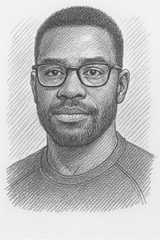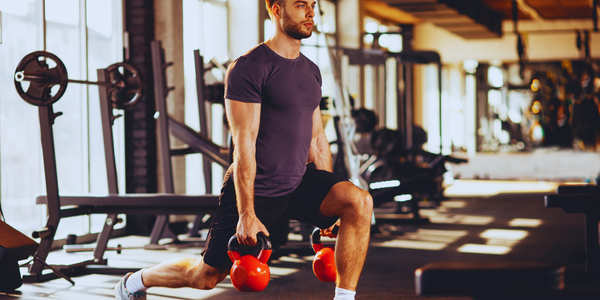Scientists Discover This Exercise Type Prevents Muscle Aging Most Effectively
Groundbreaking Aging Muscle Study reveals the most effective exercise type to combat sarcopenia and maintain strength as you age. See what researchers discovered

https://www.youtube.com/watch?v=RbEWBr2jZrs
More than 50 million people worldwide are fighting sarcopenia, a condition that harms muscle health as we age. New research shows that a certain exercise can slow down muscle aging and boost strength in older adults.
Muscle loss gets worse with age. It goes from 5-13% in people aged 60-70 to 11-50% for those over 80. Scientists have found a strong way to fight this Muscle Atrophy Prevention problem.
Recent studies on muscle aging found that specific resistance training can reverse muscle loss. Sarcopenia Research shows that resistance exercises can also boost muscle strength, improve function, and enhance life quality for older adults.
Key Takeaways
- Sarcopenia affects over 50 million people worldwide
- Exercise can significantly slow muscle aging process
- Resistance training offers most promising muscle preservation results
- Muscle loss rates increase dramatically after age 60
- Targeted exercises can restore muscle strength and functionality
The Science Behind Muscle Aging and Exercise Benefits
Learning about aging and muscle health is key to understanding Geriatric Exercise Physiology. As we get older, our muscles change a lot. These changes can affect how well we move and our overall quality of life.
Understanding Sarcopenia and Age-Related Muscle Loss
Staying strong is important as we age to fight sarcopenia. This is when muscle mass and strength go down. By age 50, we lose about 10% of our muscle mass.
After that, muscle loss speeds up. It goes down by 0.7%–0.8% each year in our 70s and 80s.
- Muscle mass peaks between ages 30-35
- Strength decline rates estimated at 2%–4% per year
- Approximately 30% of adults over 70 experience mobility challenges
How Exercise Affects Gene Expression in Aging Muscles
Exercise is a strong tool against muscle loss with age. Regular workouts can change how our muscles and genes work. This can even help reverse some age-related problems.
| Exercise Impact | Physiological Benefits |
|---|---|
| Muscle Mass Increase | Up to 10% improvement |
| Insulin Sensitivity | Significant enhancement |
| Mobility Function | Substantial improvement |
The Role of Myc Transcription Factor in Muscle Rejuvenation
New studies show the Myc transcription factor might help muscles heal. Exercise makes Myc work more than other ways to make cells young again. This gives us hope for fighting muscle aging.
Knowing these facts helps us find ways to keep our muscles strong. We can fight aging with the right exercise plan.
Aging Muscle Study: Exercise as a Natural Anti-Aging Solution
Research shows exercise is a strong way to fight muscle aging. Scientists found that specific workouts can slow down muscle aging. They also help keep strength in older adults.
Longevity Fitness Programs are backed by science to keep muscles healthy. Studies show great benefits from regular exercise:
- Boosts muscle protein synthesis
- Improves skin thickness and elasticity
- Increases collagen genes
- Reduces inflammation
A key study with middle-aged Japanese women showed exercise's power. After 16 weeks, they saw big improvements:
- Resistance training boosted lean tissue
- Aerobic training cut body weight
- Both types improved skin structure
Exercise leads to positive genetic changes against muscle aging. It's shown that starting exercise late can still bring big health gains. Even those who don't move much can see benefits from regular activity.
To get the best results, mix resistance and aerobic training. This combo keeps muscles strong, boosts metabolism, and improves function as we age.
Most Effective Exercise Types for Preventing Muscle Aging
Aging doesn't mean you have to stop exercising. Elderly strength training is a great way to fight muscle loss and keep you feeling alive. As we get older, our muscles naturally shrink. So, it's important to choose the right exercises to stay strong and healthy.
Research into Geriatric Exercise Physiology has uncovered important facts. The latest studies show that specific workouts can really slow down muscle aging.
Resistance Training Benefits for Older Adults
Resistance training is a big win for seniors:
- Increases muscle strength by up to 3% per session
- Reduces risk of sarcopenia by 25-45%
- Improves balance and reduces fall risks
- Enhances metabolic health
Low-Impact Full-Body Workout Recommendations
Longevity Fitness Programs focus on gentle yet effective exercises. Experts suggest adding these low-impact activities:
- Seated resistance band exercises
- Bodyweight squats with support
- Wall push-ups
- Lightweight dumbbell routines
Optimal Exercise Frequency and Intensity Guidelines
Following these guidelines helps you get the most out of your workouts:
| Exercise Type | Frequency | Duration |
|---|---|---|
| Resistance Training | 2-3 times/week | 30 minutes |
| Walking | 5 days/week | 30-45 minutes |
| Balance Exercises | 3 times/week | 15-20 minutes |
Remember: Consistency is key in maintaining muscle health and preventing age-related decline.
Conclusion
Understanding how to prevent muscle atrophy is key to staying strong and mobile as we get older. Studies reveal that sarcopenia affects 8% to 40% of the aging population. This has big health and economic impacts. The good news is that specific exercises can slow down this decline.
Longevity fitness programs are a smart way to fight muscle loss. Older adults can boost muscle strength and function by exercising 2-4 times a week. The goal is to do consistent, challenging workouts that build muscle and stimulate protein.
Custom workout plans help keep muscle mass and function high as we age. Age shouldn't stop us from staying fit. It's a chance to focus on muscle upkeep.
Even after age 70, muscle mass naturally drops by 0.5% to 1% each year. But, with the right exercise and diet, you can slow down these losses. This keeps muscle strength up, improves mobility, and boosts your overall life quality.
FAQ
What is sarcopenia and why should I be concerned about it?
Sarcopenia is when we lose muscle mass and strength as we age. It starts around 40 and can affect how we move and feel. Studies show we can slow this down with the right exercise and diet.
At what age should I start worrying about muscle loss?
Muscle loss can start in our 30s, but it's more noticeable after 40. Starting early is best, but it's never too late to start. Even in our 60s and 70s, we can still improve our muscle strength with regular exercise.
What type of exercise is most effective for preventing muscle aging?
Resistance training is the best way to fight muscle aging. This includes lifting weights, doing bodyweight exercises, and using resistance bands. These activities help build muscle and improve how our genes work.
How often should older adults exercise to maintain muscle mass?
Older adults should do resistance training 2-3 times a week. Each session should have 8-10 exercises, with 2-3 sets of 10-15 reps. Start slow and increase the intensity over time, always checking with a doctor first.
Can I reverse muscle loss if I've been inactive for years?
Yes, studies show we can reverse muscle aging with regular exercise. Our bodies can rebuild and strengthen muscles at any age. Even those who have been inactive for years can see big improvements with low-impact exercises.
Are there any specific nutrients that help prevent muscle loss?
Protein is key for keeping muscles strong. Older adults should eat 1.2-1.6 grams of protein per kilogram of body weight each day. Vitamin D, omega-3s, and amino acids like leucine also help. A nutritionist can help create a diet plan that works with your exercise routine.
How long does it take to see improvements in muscle strength?
Most people start to see strength gains in 8-12 weeks of regular resistance training. But, changes in cells and genes happen sooner. The most important thing is to keep exercising consistently and follow a program that fits your fitness level and health.
Source Links
- Exercise for sarcopenia in older people: A systematic review and network meta‐analysis
- Impact of aging and exercise on skeletal muscle mitochondrial capacity, energy metabolism, and physical function - Nature Communications
- Effects of Exercise and Aging on Skeletal Muscle
- How can strength training build healthier bodies as we age?
- Can exercise reverse muscle aging? Yes, and this is how
- Protein intake and exercise for optimal muscle function with aging: Recommendations from the ESPEN Expert Group
- Resistance training rejuvenates aging skin by reducing circulating inflammatory factors and enhancing dermal extracellular matrices - Scientific Reports
- Key exercises you should perform as you age | CNN
- How to Fight Sarcopenia (Muscle Loss Due to Aging)
- Strength training over 60 can help prevent sarcopenia | Aging | Prevention | UT Southwestern Medical Center
- Muscle Changes in Aging: Understanding Sarcopenia
- Aging impairs contraction-induced human skeletal muscle mTORC1 signaling and protein synthesis - Skeletal Muscle
- Frontiers | Optimizing Skeletal Muscle Anabolic Response to Resistance Training in Aging
👉 Join the Active Man Community
Get expert tips, workout guides, nutrition hacks, and the latest trends delivered straight to your inbox every week. No spam — just actionable insights to help you live stronger, healthier, and better.





